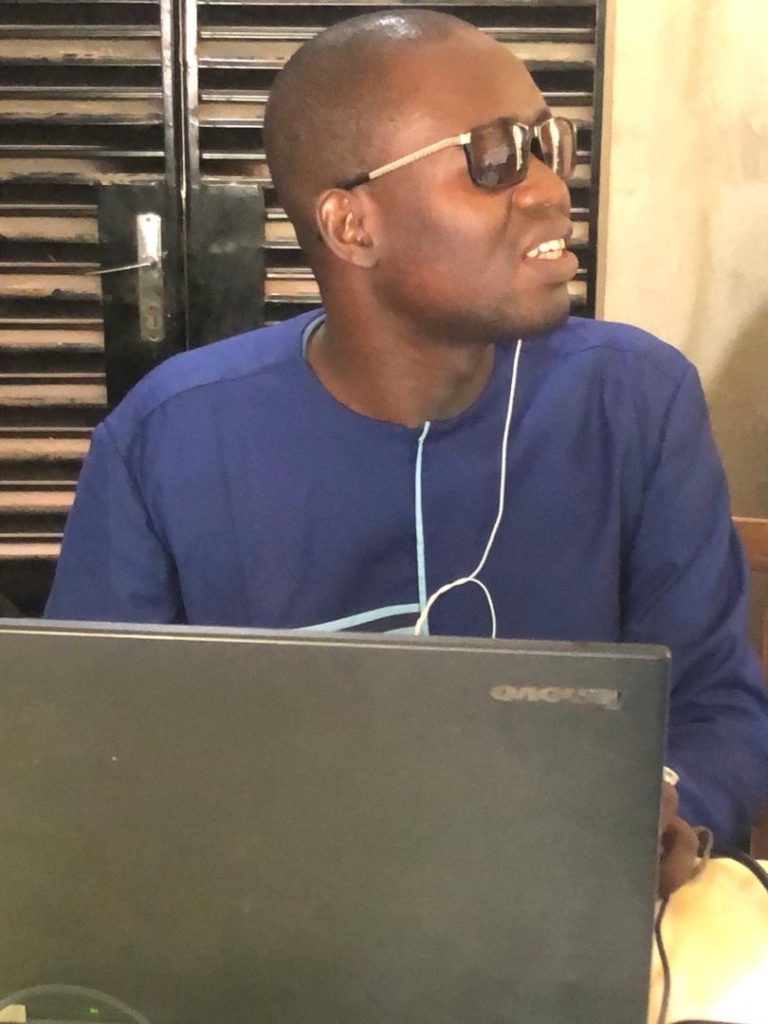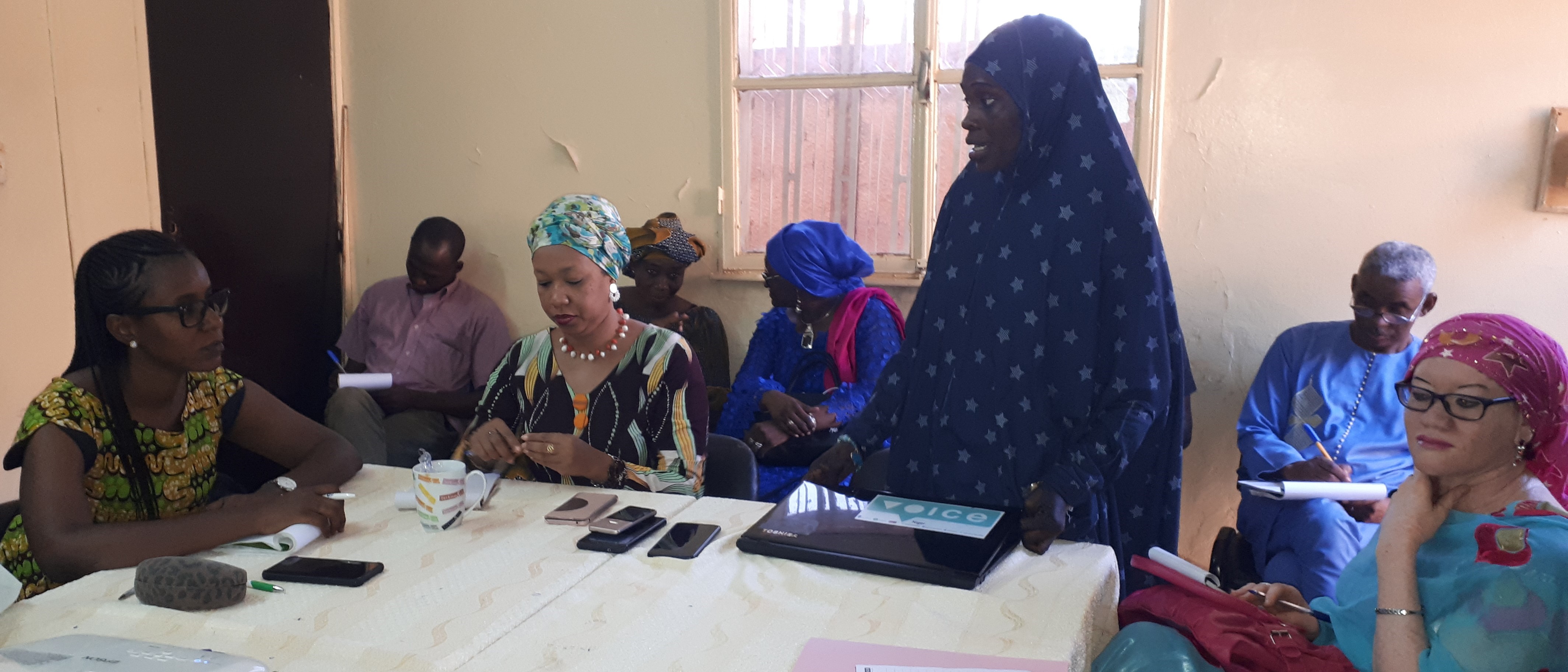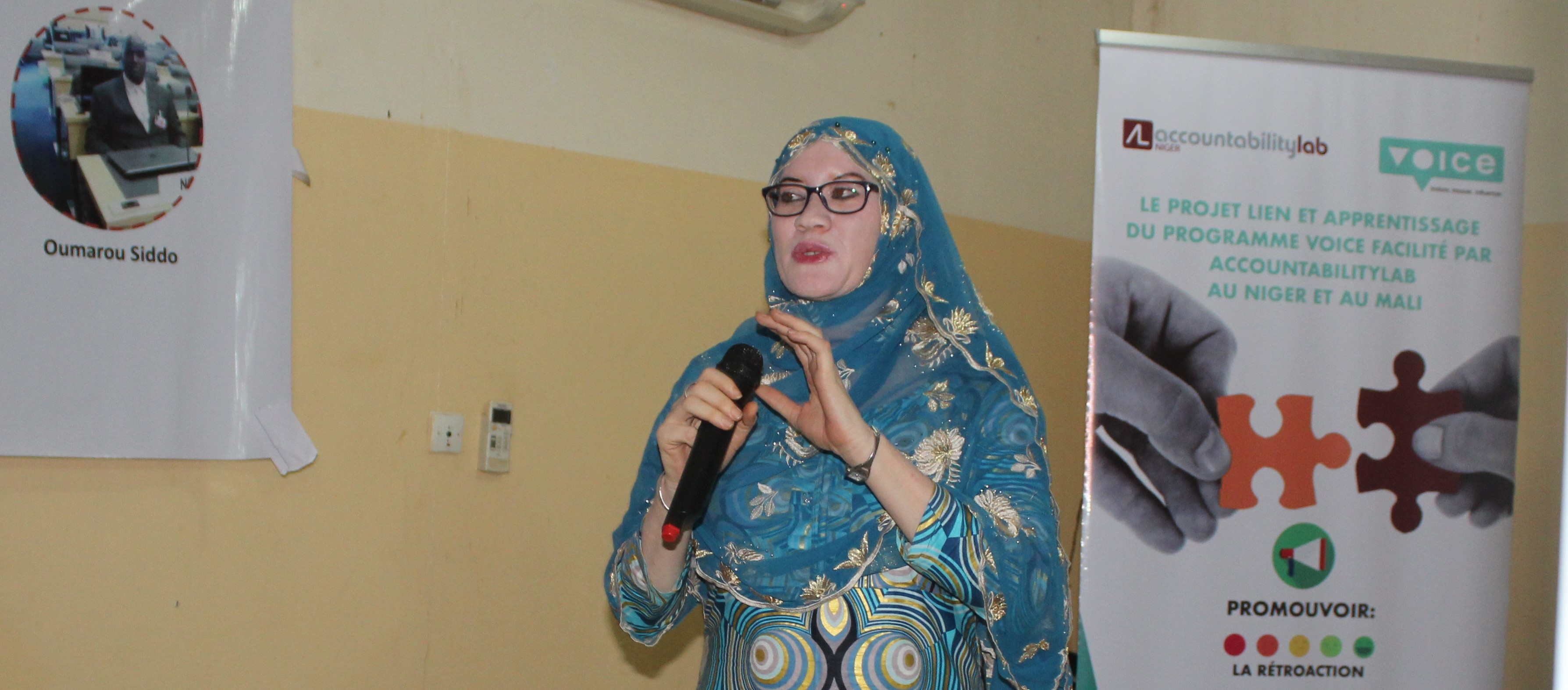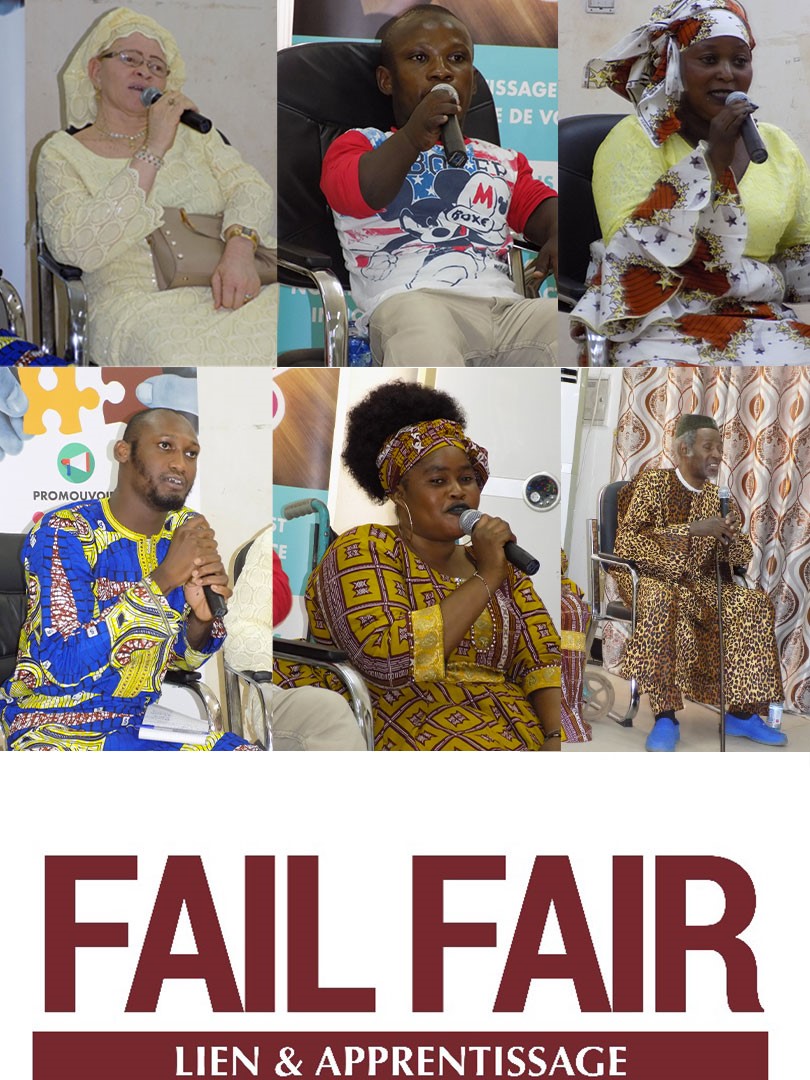Voice taking lessons at the Malian school for the blind!
A monthly meeting like no other …
Written by Kadidia Tangara, Communications Officer, Accountability Lab Mali, Linking and Learning Facilitator Mali and Niger
From discovering to learning and teaching, that’s what was at the heart of the latest monthly Linking and Learning meeting for the Voice in Mali programme. Last Thursday, July 25, grantees gathered at UMAV, the Malian Union of the Blind, an Influencing grantee for Voice in Mali.
How do you behave when meeting a person with visual impairment? That was the theme of the training animated by Drissa DIARRA, the 3rd Vice President of UMAV who was born with a visual impairment. Despite or perhaps due to his situation, Mr. DIARRA exposed the Voice grantees, how to accommodate a blind or visually impaired person.

Every person with disabilities is an expert in his or her own way
Breaking the ice!

How should I talk to someone with a visual impairment? Are there words to avoid in order not to hurt him or her? No word is forbidden: S/He “sees” also with his or her intelligence and s/he looks “with all senses.” The word “attention” should be avoided because it is the word for danger. Use “Stop!” instead. When you shake someone’s hand, say “I am holding out my hand” for his/her hands to meet. To help him/her move, offer your arm so that s/he may grab your elbow if needed.
How should I behave?

No need to speak louder, the decibels will not make up for any exchange of glances. Most people with visual impairments usually hear very well. It is sometimes necessary to get someone else to join who will be more natural and discreet in a low voice. When you meet him/her, say “hello, I’m …” because if s/he recognises your voice, s/he may be surprised to meet you in a different environment.
How to guide?

If you need to designate a place or direction, avoid saying “here” or “there,” it is better to describe things precisely. For example, “I dropped the requested document on your desk, on the right of your computer,” “I have hung your coat on the coat hook behind the door,” or “The clock is on your right as you enter through the main porch.”
How to communicate?

During a group exchange, if a third person speaks to him/her without a name, do not hesitate to touch his/her forearm so that s/he knows that we are talking to him/her. If s/he can perceive the emotion of others, the sound of their voice, the intonation, some important visual cues can, however, escape and hinder the understanding of the situation (posture, eye exchanges …). Do not hesitate to say something!
Mr Drissa DIARRA hopes that with this guide, the partners of the Voice programme have been able to address their fears on how to interact with people with visual disabilities!







